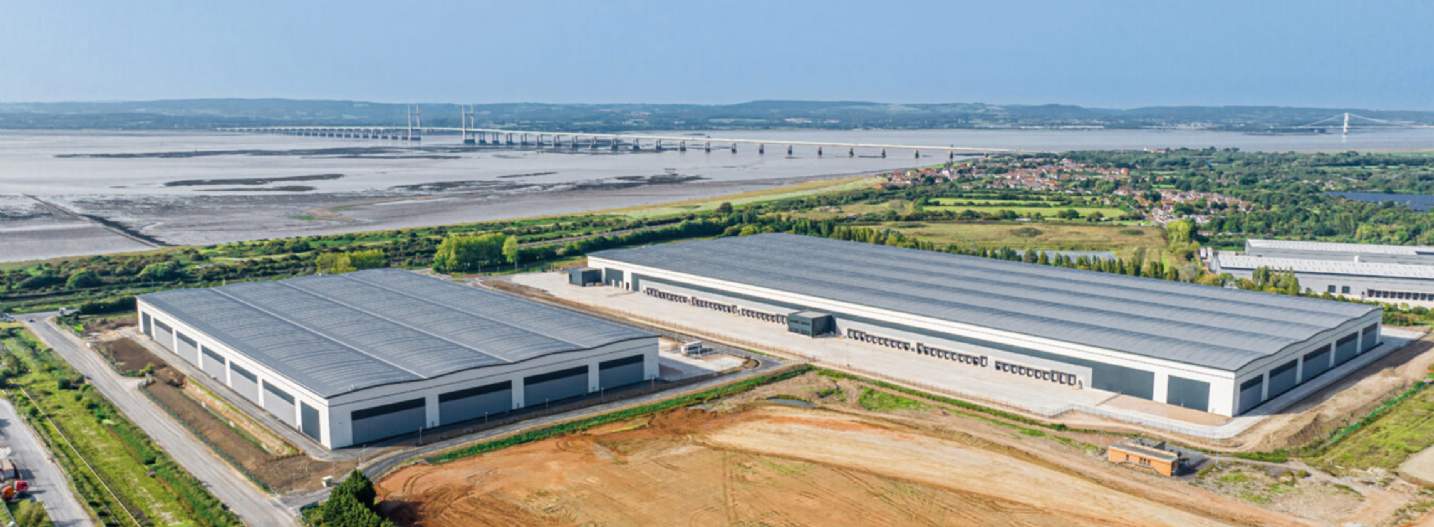Demand rises in first half of the year as take-up of existing units set to drive a fall in vacancy into 2025
.jpg)
Panattoni Park Avonmouth, where Panattoni, advised by Savills, has delivered 1.3m sq ft speculatively
Following a challenging 2023 in the UK logistics market, where take-up dropped by 43% year on year, a better 2024 was hoped for by many as economic indicators started to move back towards a more positive outlook. While the Bank of England has yet to move base rates downwards, the narrative has changed to 'when, not if'. This has been made possible by the continued improvement of the inflation readings, which continue to trend closer to the target of 2%.
The recent general election result was founded on the principle of 'change', and whilst it is too early to comment, financial markets have responded positively. The Labour Party covered planning reforms in its manifesto along with a strategy for sustained economic growth, which may offer some optimism for more activity in the latter half of the year and beyond.
We continue to see generally positive – albeit not blockbuster – indicators for the logistics market. For example, Q1 2024 GDP growth exceeded expectations and has been revised upwards to 0.7%. The latest retail data from the ONS shows that sales have increased, and crucially for the logistics sector, volumes have also increased, notably in the non-food sector. Pleasingly, we are also seeing online penetration increase, which now stands at 26.2%, up from 25.4% a year ago. Consumer confidence, overall, remains in positive territory but is a volatile indicator. As winter draws in, attention will return to energy prices, and retailers will turn their attention to Christmas trading. If we continue to see volume growth instead of just sales growth, this will bode well for the logistics property market.
Nearshoring remains on the agenda as global supply chains continue to struggle with geopolitical events. The average cost of moving a 40ft container between Asia and Northern Europe hit $6,855 in late June, up more than 110% in two months. Whilst many shippers are confident that supply chain bottlenecks will be avoided, we expect this trend will continue to add fuel to the nearshoring fire. All of the above continues to feed into occupier behaviour, and the Savills requirements index has risen almost 12% QoQ, suggesting that take-up levels will continue to improve.
Take-up
At a national level, take-up for the first half of 2024 for units over 100,000 sq ft has reached 16.82m sq ft across 63 transactions. This is a 44% increase on H1 2023, a 13% increase on the long-term average and demonstrates improving confidence as the year progresses, with 61% of take-up occurring in Q2.
Whilst we have seen 5.5m sq ft of build-to-suit (BTS) deals so far this year, 18% ahead of H1 2023, overall, this segment of the market remains depressed, accounting for 33% of the space transacted, compared to the long-term average of 37%. Indeed, by unit count, 75% of transactions in 2024 have been for existing units.
Encouragingly, we continue to see diversification of the occupier mix, with manufacturing-related deals accounting for 28% and 3PLs accounting for 33%; take-up from online retailers remains subdued, at just 5% of the market.
Supply and Pipeline
The combination of 5.7m sq ft of speculative completions in H1 2024 and 12.2m sq ft of second-hand space returning to the market has seen supply rise 14% in the last six months to stand at 56.28m sq ft, reflecting a 6.95% vacancy rate. Of the total supply, 55% is classified as Grade A, which has trended down from 58% at the start of the year.
With 13% of the current supply under offer and strong demand for existing units, we expect the nationwide vacancy rate to trend downwards into 2025. There is currently 10.16m sq ft of space being developed speculatively, 9% of which is under offer.
